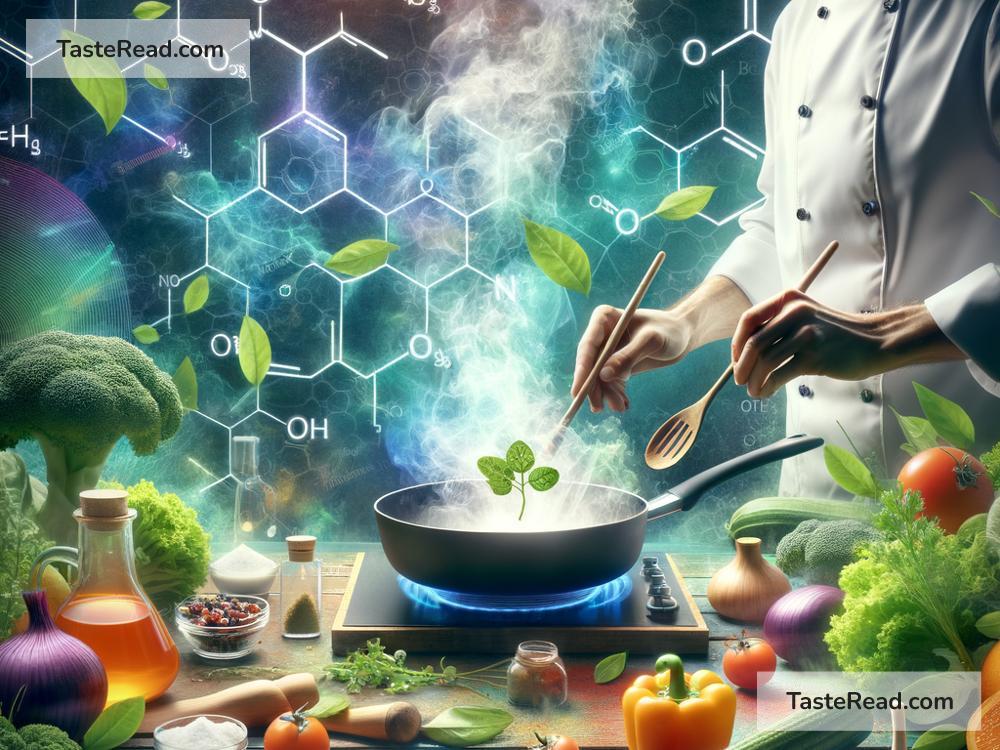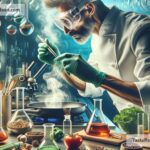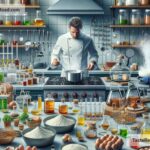The Science of Cooking with Chemical Courage: Techniques and Tips
Cooking is a magical blend of art and science. When you step into the kitchen, you’re not just following recipes—you’re a scientist conducting flavorful experiments. The science of cooking revolves around chemistry: how heat, moisture, and molecules interact to transform raw ingredients into delicious meals. Cooking with “chemical courage” means embracing these processes with confidence, understanding how they work, and using techniques that maximize flavor and texture.
In this blog, we’ll explore how science plays a role in the kitchen, share practical techniques, and provide tips you can use to improve your cooking. Let’s dive into the fascinating world of food chemistry!
What Is Chemical Courage?
Chemical courage is the boldness to understand and trust the chemical changes happening during cooking. Instead of relying purely on intuition, chemical courage involves recognizing the scientific principles behind common techniques. For example:
- Why does a steak taste juicier when you let it rest after cooking?
- What happens when you mix baking soda with vinegar in a cake batter?
- Why do eggs solidify when heated?
When you understand the “why” behind these issues, you can make smarter, tastier choices in the kitchen. Science empowers you to experiment, adjust recipes, and troubleshoot problems with confidence!
Essential Chemistry Concepts for Cooking
Let’s explore some basic scientific principles that will inspire your chemical courage:
1. Heat and Molecular Changes
Heat changes food at a molecular level. Proteins denature (unravel), starches gelatinize (absorb water and swell), and sugars caramelize (turn brown and sweet). This is why raw meat becomes tender and flavorful when cooked, why pasta softens in boiling water, and why baked goods develop golden crusts.
The type of heat—convection (hot air), conduction (direct contact), or radiation (infrared heat)—determines how evenly and quickly food cooks. Knowing how heat works helps you avoid burning or undercooking.
2. Acids and Bases
Acids (like lemon juice, vinegar, and yogurt) and bases (like baking soda) play vital roles in cooking. Acids tenderize meat, brighten flavors, and promote browning. Bases are often used in baking to create air bubbles that make cakes and bread rise. Balance is key: too much acid can make food overly sour, while excess base can taste bitter.
3. Maillard Reaction
The Maillard reaction is a fancy way of describing the chemical process that creates browning in cooked proteins and carbohydrates. When you sear a steak, toast bread, or roast vegetables, the Maillard reaction gives them their irresistible flavors and aromas. High heat is critical here, so make sure your pan or oven is preheated for those beautiful golden-brown surfaces.
4. Emulsions
Ever wondered how mayonnaise or salad dressings combine oil and water—a combination that normally separates? That’s because emulsifiers like eggs or mustard bind the liquids together. Understanding emulsions helps you create creamy sauces and stable mixtures.
Techniques to Cook Like a Scientist
Here are a few practical techniques that highlight food chemistry:
1. Searing for Flavor
When cooking meat or vegetables, searing at high heat locks in flavor and creates a crispy crust rich with notes from the Maillard reaction. Use a hot pan, avoid crowding, and resist flipping too soon. Let the surface fully brown before turning it.
2. Balancing Flavors
Cooking is all about balance. Sweet, salty, sour, bitter, and umami are the primary flavors that interact on your taste buds. Add a splash of vinegar or citrus for brightness, a pinch of sugar to tame bitterness, or soy sauce for depth. Experiment, and taste as you go!
3. Resting Meat
After cooking meat, let it rest for 5-10 minutes before cutting into it. This allows the juices to redistribute, making your steak or roast much juicier and tender. Skipping this step can cause those juices to rush out when sliced, leaving your meat dry.
4. Using Heat to Your Advantage
Sometimes high heat is your friend—like when frying or broiling—but other times low, slow cooking produces better results (such as with making soups or braising tough cuts of meat). Match the heat to the desired texture and flavor.
5. Mastering Baking Magic
Baking relies on precision—it’s less forgiving than cooking on the stovetop. Measure ingredients carefully, preheat your oven, and follow instructions closely. Baking soda and baking powder are two leaveners with unique roles, so don’t substitute them without understanding their chemical differences!
Tips for Cooking with Chemical Courage
Here are some easy tips to start applying food science in your kitchen:
- Preheat your pans and oven: Starting with a hot surface ensures even cooking.
- Taste as you go: Adjust seasonings gradually to hit the perfect balance of flavor.
- Use a thermometer: When cooking meat or baking bread, a thermometer is your best tool to minimize guesswork.
- Experiment fearlessly: Try new ingredients and techniques—science is about learning and discovery.
- Read about why methods work: Understanding the “why” behind recipes deepens your skills.
Cook Smarter, Not Harder
Cooking with chemical courage isn’t about memorizing formulas—it’s about building confidence. By embracing the science behind food, you can cook smarter and achieve tastier results. Whether you’re searing, baking, or simmering, remember that cooking is a series of chemical transformations, and you’re the chemist orchestrating them.
So the next time you step into your kitchen, don’t just cook—experiment, learn, and savor the magic of food science. Happy cooking!


